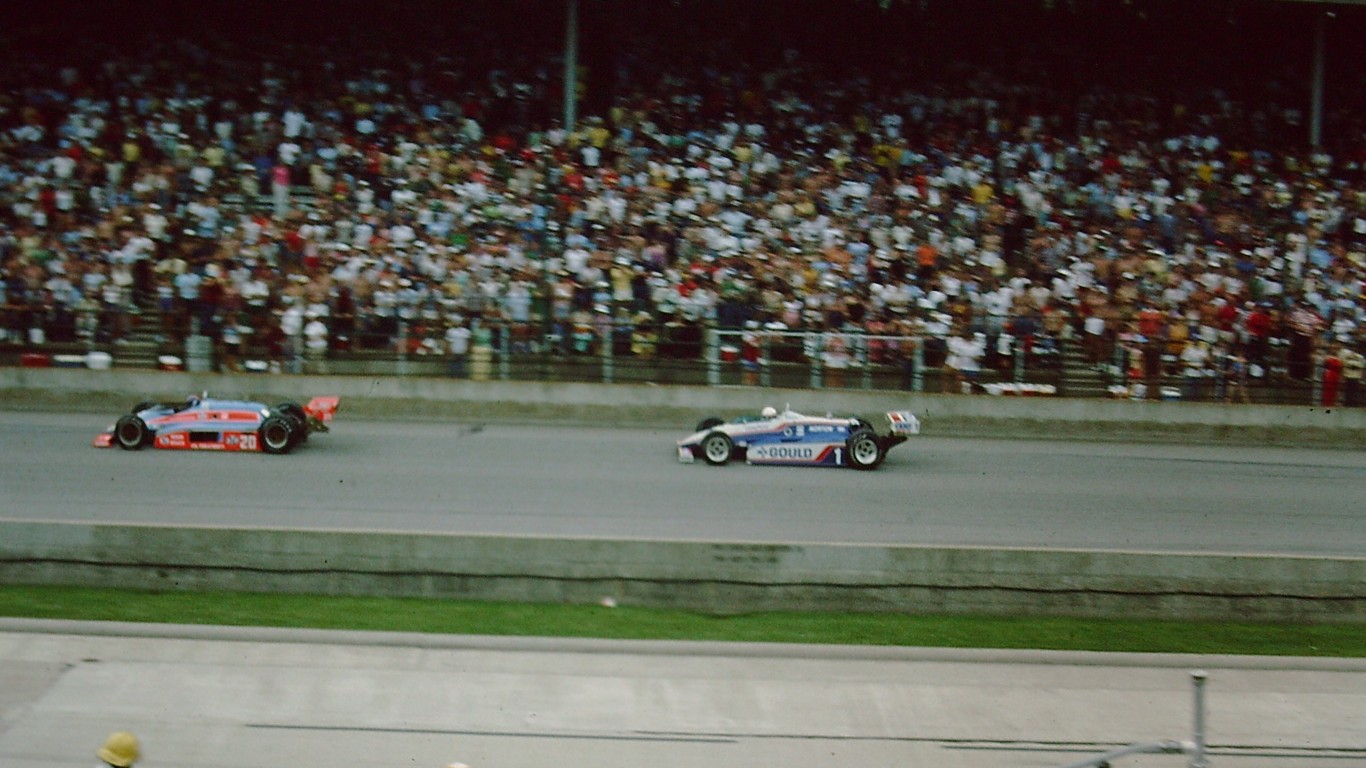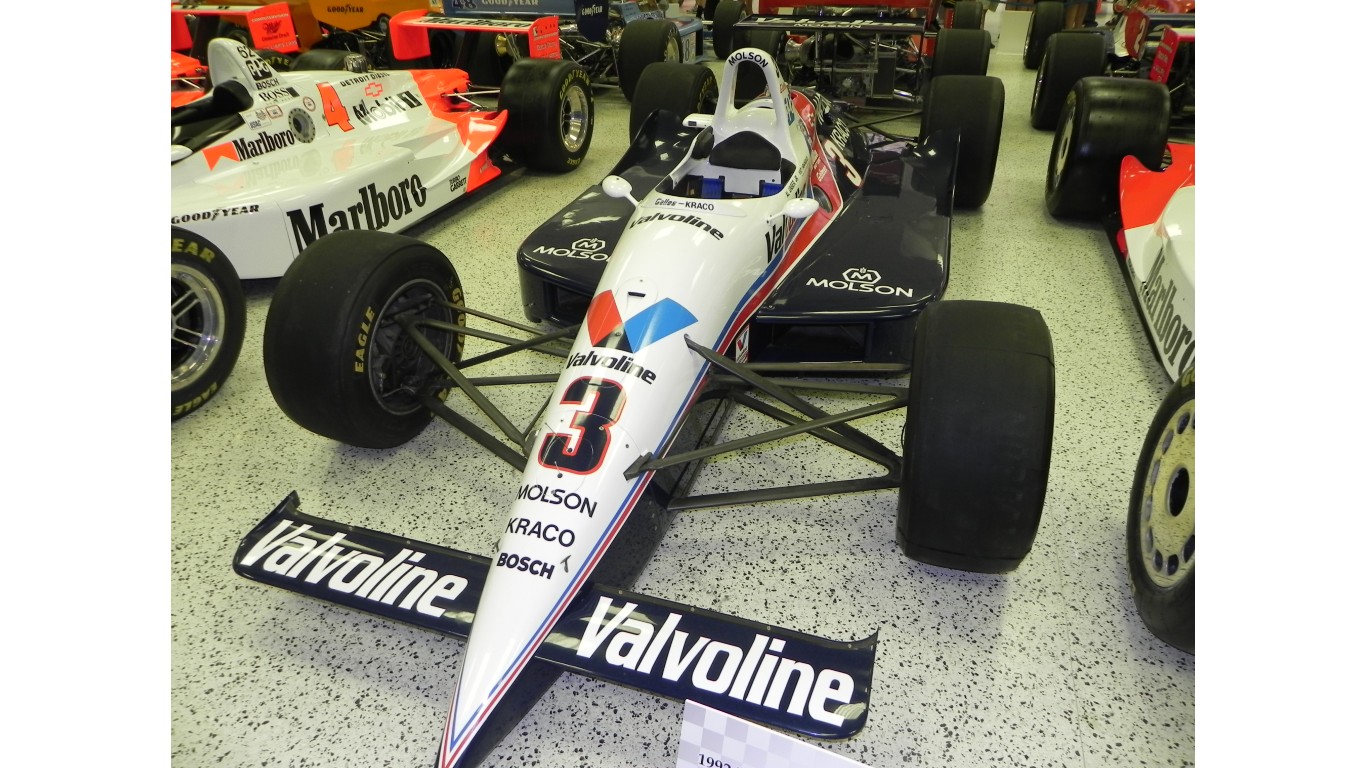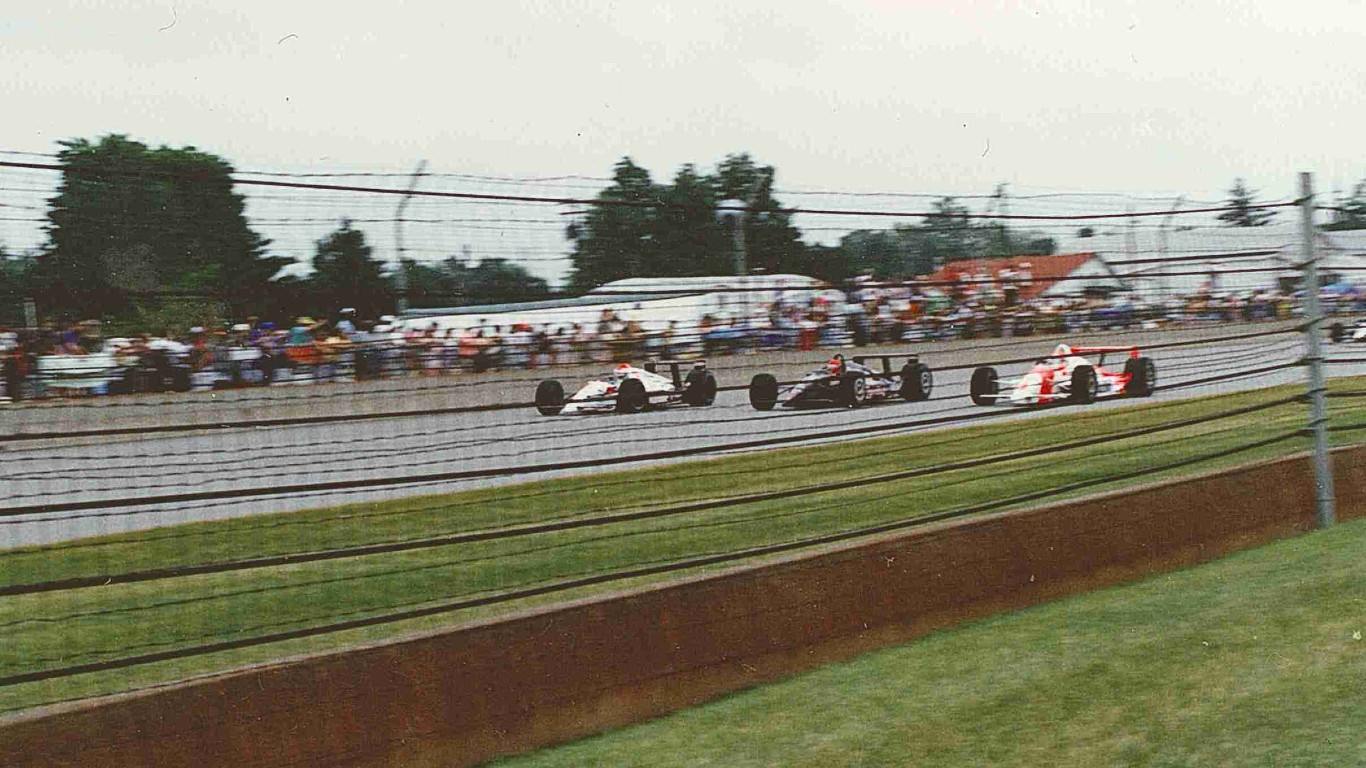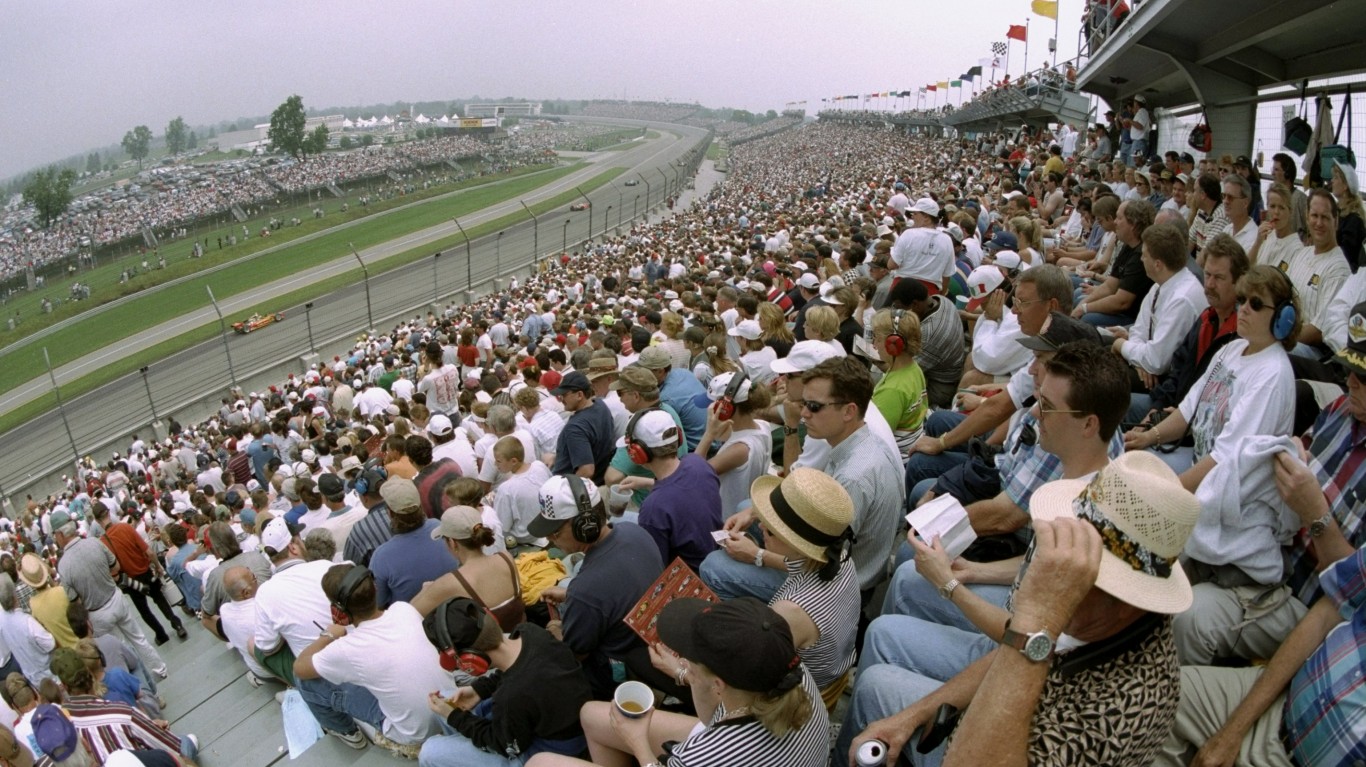
The Indianapolis 500 is often known as “The Greatest Spectacle In Racing,” with cars speeding around the track at over 200 mph with drivers chasing Indy 500 glory. The race is thrilling, often featuring crashes, daring passes, and photo finishes.
While every Indy 500 features some exciting moments, a handful of the 104 races so far stand out as some of the most exciting races in motor sports history.
To determine the most exciting Indianapolis 500 races in history, 24/7 Wall St. used data from auto racing database Racing-Reference to create an index, considering such factors as race time, number of lead changes, and margin of victory.
There have been a number of incredible finishes at the Brickyard in the 100-plus years of the Indianapolis 500. Fans have been on hand to see last second comebacks, legendary duels between drivers, and underdog winners coming from out of nowhere to earn their spot in victory lane.
Another aspect that makes the Indy 500 exciting is the background stories of drivers and teams going into race day. There have been fathers racing with their sons, miraculous recoveries from crashes, women making history by qualifying, and bitter feuds that boil over on the track.
The thrill of the Indianapolis 500 has made its way several times to Hollywood. Over the years, a number of directors have been able to distill the excitement of racing and competing into a big budget blockbuster. These are the greatest sports movies of all time.
Click here to see the most exciting races in Indy 500 history

20. 1998
> Winning driver: Eddie Cheever, Jr. (avg. speed: 145.2 mph)
> Lead changes: 23
> Margin of victory: 3.19 seconds
> Winning race time: 3:26:41
American Eddie Cheever, Jr. took home his first and only Indianapolis 500 title in 1998 in one of the most exciting editions of the races ever held at the Brickyard. The race was a back-and-forth affair, with 10 different drivers leading the field for at least a lap. Cheever, Jr. edged out Buddy Lazier by just over three seconds.
[in-text-ad]
19. 1981
> Winning driver: Bobby Unser (avg. speed: 139.1 mph)
> Lead changes: 24
> Margin of victory: 5.22 seconds
> Winning race time: 3:35:42
The 1981 Indianapolis 500 is still remembered decades later for its controversial finish. Bobby Unser was named the official winner, but Mario Andretti claimed the crown as well. Unser was initially declared the winner, but Andretti and his team complained Unser illegally passed several cars while exiting his pit under caution.
Race judges initially agreed with Andretti and docked Unser a lap, giving Andretti the win. Unser put in a legal challenge, and after months of depositions and deliberations, three outside judges ruled 2-1 in Unser’s favor, giving him the win more than four months after he crossed the finish line.
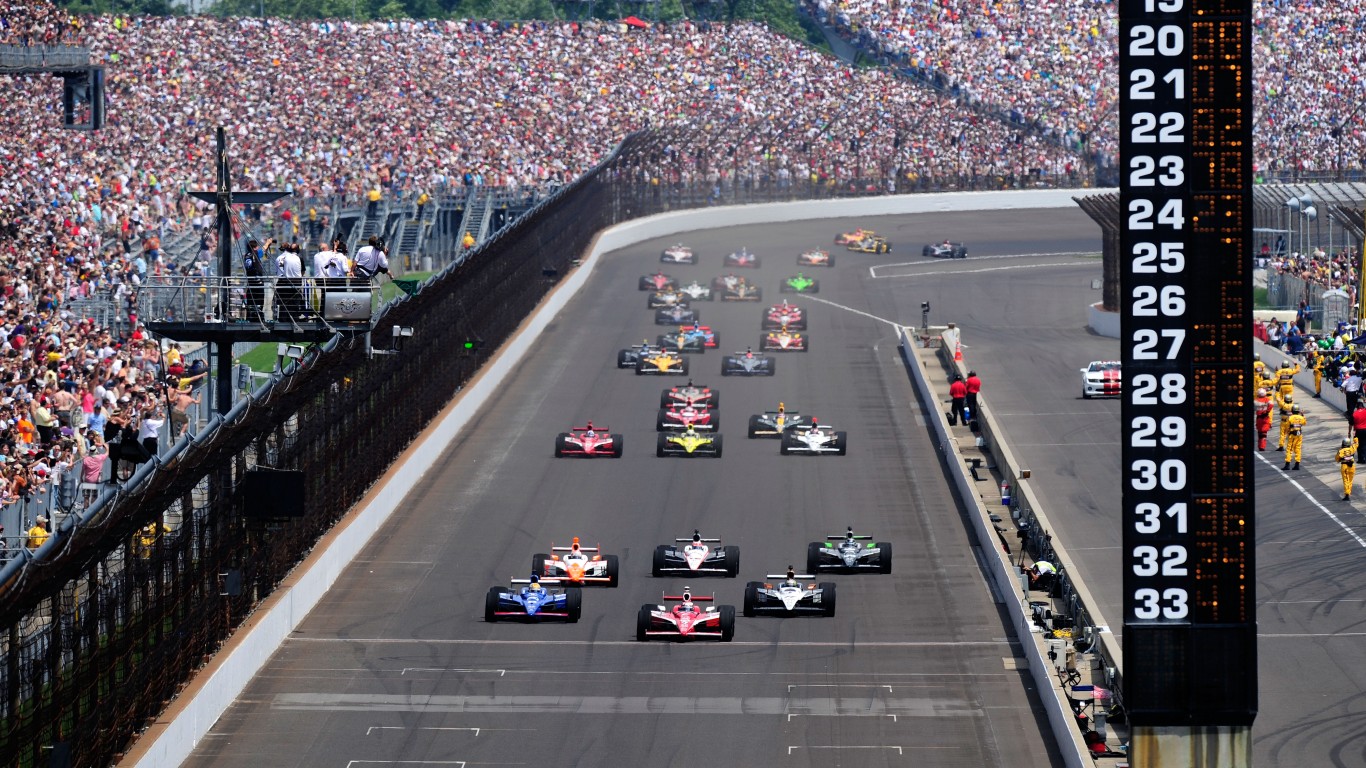
18. 2011
> Winning driver: Dan Wheldon (avg. speed: 170.3 mph)
> Lead changes: 23
> Margin of victory: Under caution
> Winning race time: 2:56:11
Dan Wheldon led for just a single lap at the 2011 Indianapolis 500, but it was the most important one. JR Hildebrand was way out in front, going into the final lap when he smashed into the wall at the fourth turn as he tried to pass a car he was lapping. Hildebrand’s smashed car sputtered across the line, but not before Wheldon shot past him to win his second Indy 500.
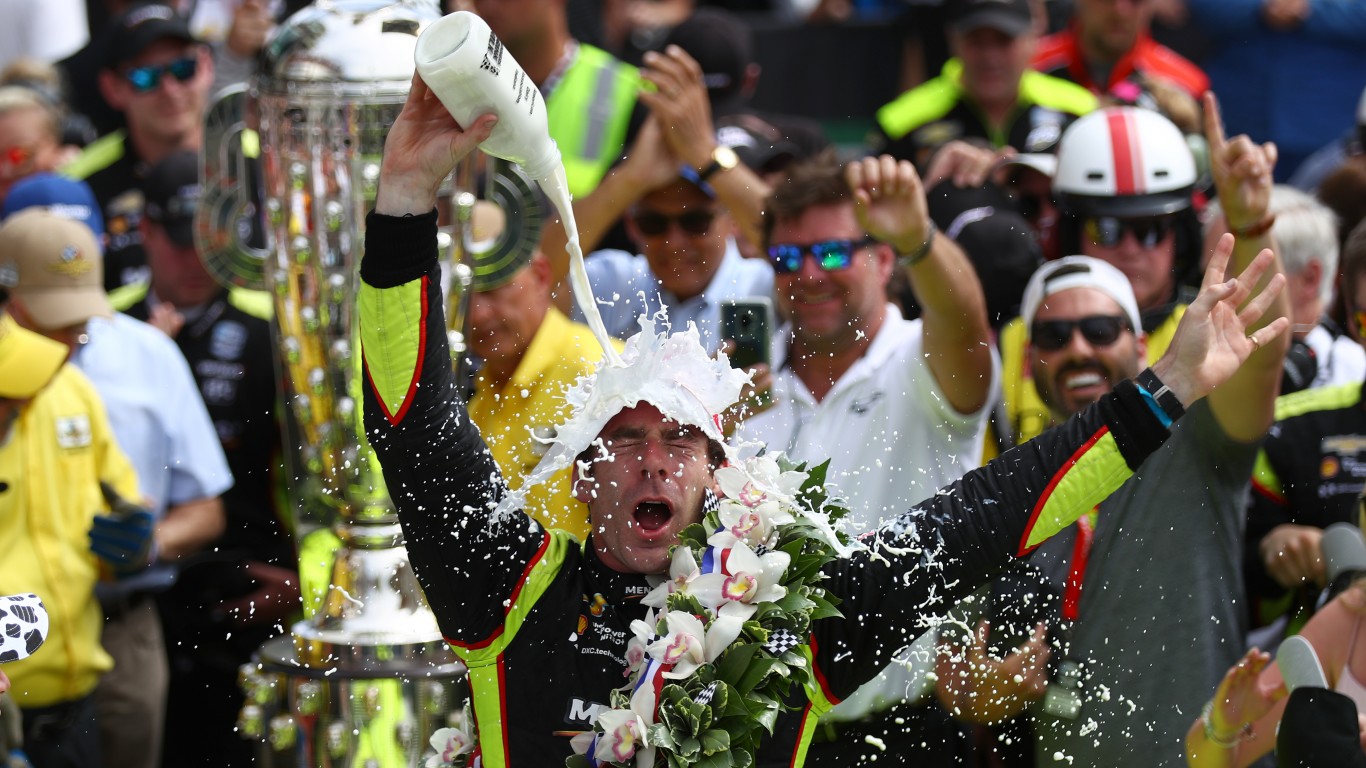
17. 2019
> Winning driver: Simon Pagenaud (avg. speed: 175.8 mph)
> Lead changes: 29
> Margin of victory: 0.21 seconds
> Winning race time: 2:50:39
The 2019 Indianapolis 500 had it all — it was a fast, well-run race with few cautions and a dramatic finish. Though he led for over half of the race, Simon Pagenaud found himself in second place behind Alexander Rossi with just over one lap remaining in the race. He took the lead with a daring pass of Rossi and managed to hold off his challenger and win by less than a quarter of a second.
[in-text-ad-2]
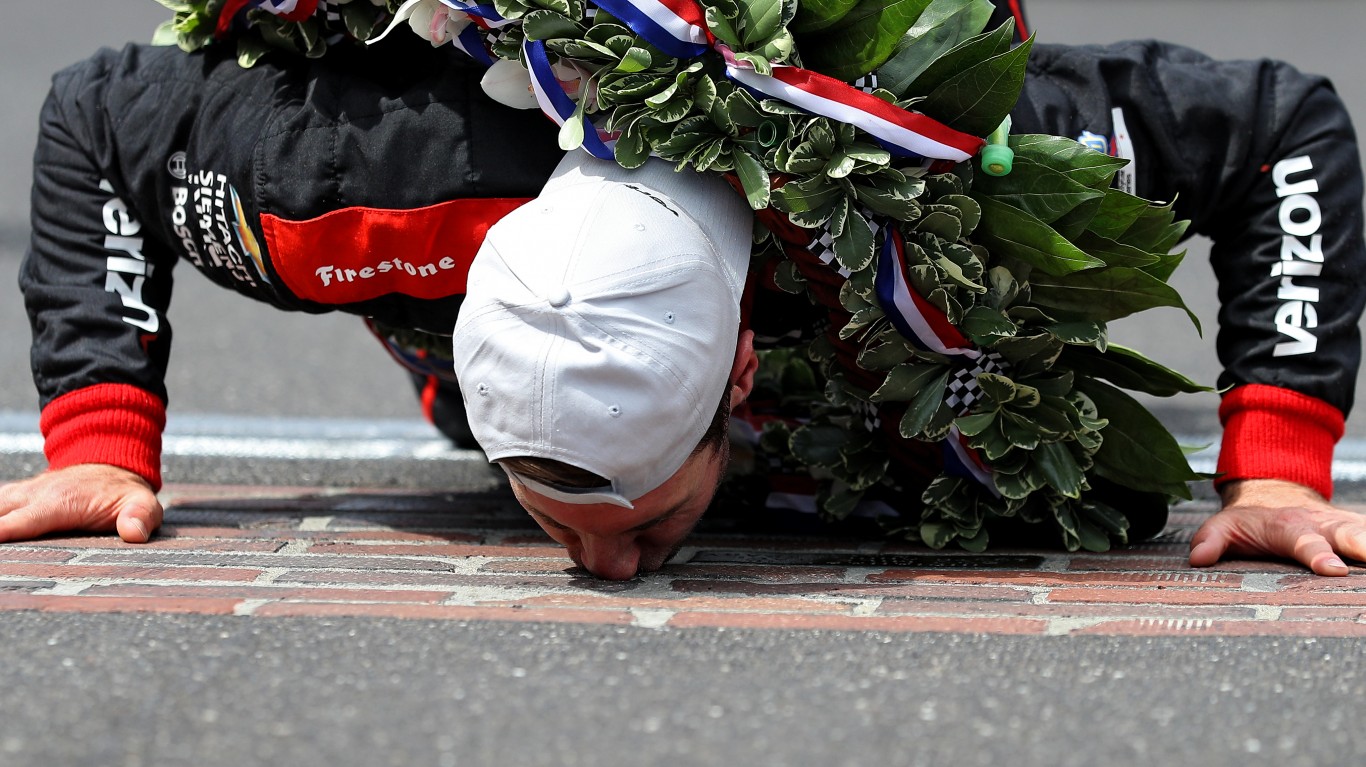
16. 2018
> Winning driver: Will Power (avg. speed: 166.9 mph)
> Lead changes: 30
> Margin of victory: 3.16 seconds
> Winning race time: 2:59:43
The 2018 Indianapolis 500 was one of just 13 Indy 500 races ever to run a full 200 laps to finish in under three hours. It had 30 total lead changes, with 15 of the 33 drivers out in front for at least one lap. The race was a perilous one, with big names like Helio Castroneves, Danica Patrick, Takuma Sato, and Tony Kanaan crashing out. With a thinned out field, Will Power was able to take a late lead and win his first Indy 500.

15. 2017
> Winning driver: Takuma Sato (avg. speed: 155.4 mph)
> Lead changes: 35
> Margin of victory: 0.20 seconds
> Winning race time: 3:13:03
The 2017 Indianapolis 500 turned into a last-lap duel between Takuma Sato of Japan and three-time winner Helio Castroneves. Sato pulled ahead with just a few laps to go and managed to hold off Castroneves as the Brazilian tried to press for first place. With a 0.20 second margin of victory, Sato’s triumph was one of the closest finishes in Indy 500 history.
[in-text-ad]

14. 2015
> Winning driver: Juan Pablo Montoya (avg. speed: 161.3 mph)
> Lead changes: 37
> Margin of victory: 0.11 seconds
> Winning race time: 3:05:57
Five different drivers led the 2015 Indianapolis 500 for 10 or more laps. However, it was Juan Pablo Montoya, who led only for nine laps, who came away with the checkered flag. Montoya, who started in 15th position and was as far back as 30th at one point, came roaring back for the victory, as a number of major crashes thinned out the field. Montoya edged out Will Power by just over a 10th of a second
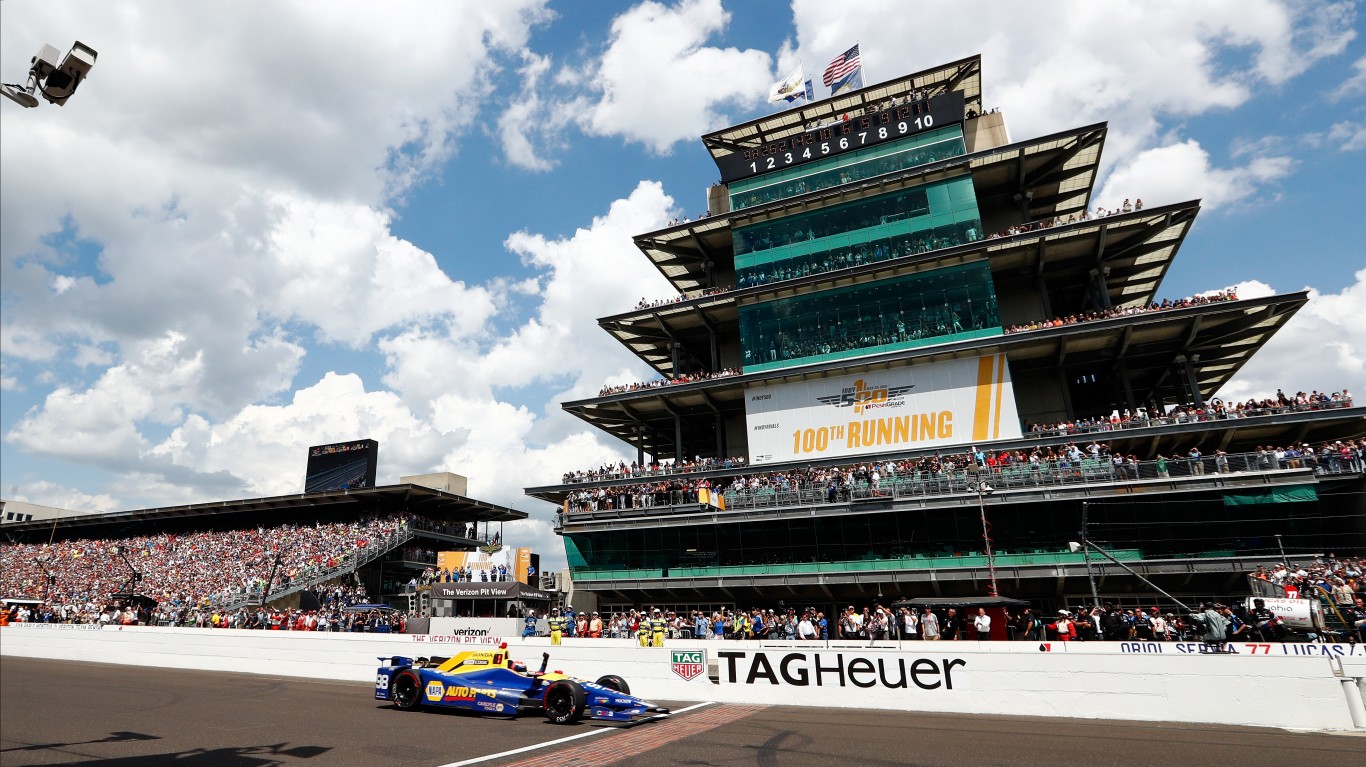
13. 2016
> Winning driver: Alexander Rossi (avg. speed: 166.6 mph)
> Lead changes: 54
> Margin of victory: 4.50 seconds
> Winning race time: 3:00:02
Experience can be an important factor in winning a major race like the Indianapolis 500, yet in 2016 Alexander Rossi became the 10th rookie driver to win the prestigious competition. The young driver made his way up to the front after starting in 11th place. The 2016 Indianapolis 500 featured an astonishing 54 lead changes between the 13 different drivers who led the field for at least one lap.
12. 1977
> Winning driver: A.J. Foyt (avg. speed: 161.3 mph)
> Lead changes: 14
> Margin of victory: 28.63 seconds
> Winning race time: 3:05:58
The 1977 Indianapolis 500 was full of records and notable accomplishments. A.J. Foyt became the first driver to win a fourth Indy 500. Only Al Unser and Rick Mears won as many times in later years. It also marked the first year a woman competed in the greatest spectacle in racing, when Janet Guthrie got behind the wheel. Though Gordon Johncock led for the majority of the race, Foyt’s experience prevailed when he won the race nearly 30 seconds ahead of his closest competitor.
[in-text-ad-2]
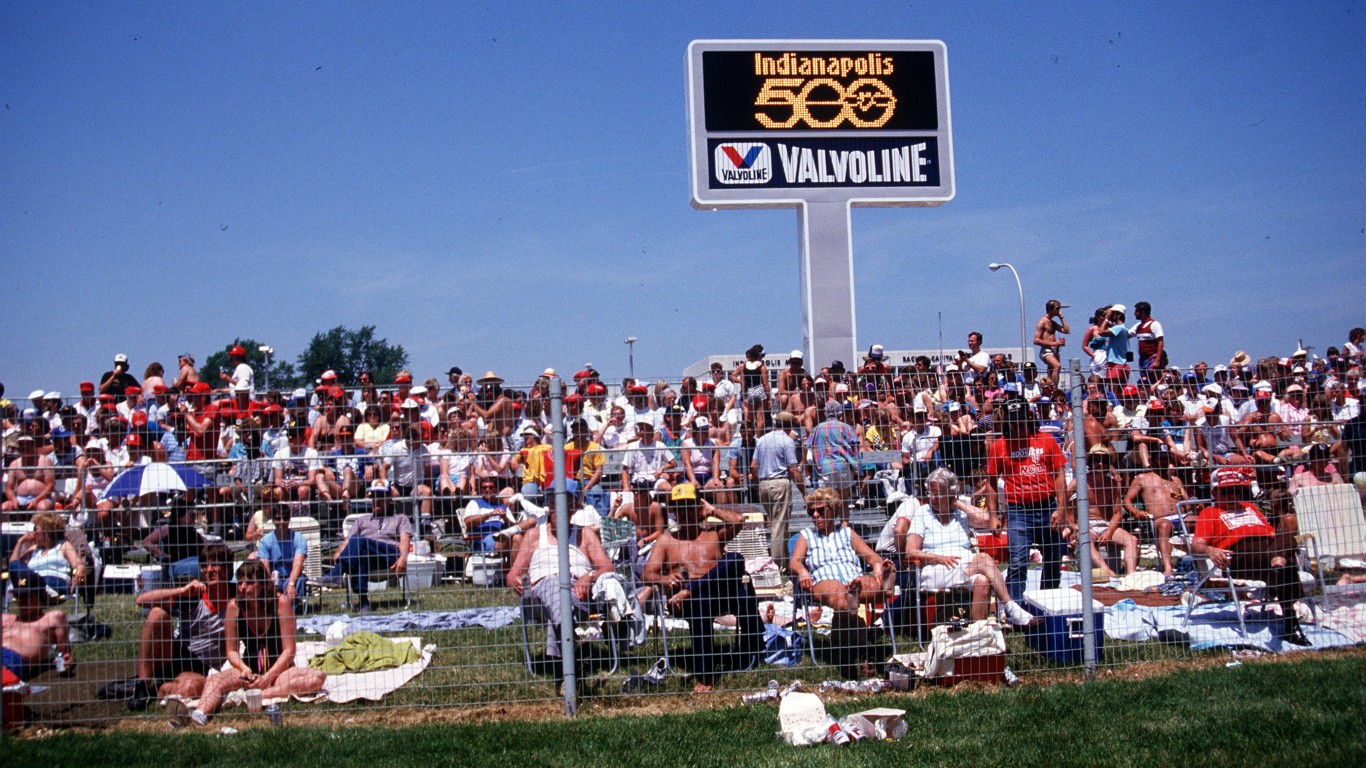
11. 1987
> Winning driver: Al Unser (avg. speed: 162.2 mph)
> Lead changes: 10
> Margin of victory: 4.50 seconds
> Winning race time: 3:04:59
The 1987 Indianapolis 500 was a wild finish marred by a tragic accident, when debris from a wreck hit and killed a spectator. Legendary driver Mario Andretti dominated nearly the entire race when his vehicle broke down. Roberto Guerrero then took the lead, but he struggled with damage to his own car. All in all, 22 of the 33 vehicles either crashed or suffered a mechanical breakdown.
Al Unser, who only got the chance to compete because his teammate crashed in practice, won his record-tying fourth Indianapolis 500, edging out Guerrero by 4.5 seconds.

10. 1999
> Winning driver: Kenny Bräck (avg. speed: 153.2 mph)
> Lead changes: 17
> Margin of victory: 6.56 seconds
> Winning race time: 3:15:51
The 1999 Indianapolis 500 ranks as one of the 10 most exciting editions of the Brickyard race. With five cars crashing out and another dozen suffering mechanical failures, most of the 33 qualifiers were unable to get close to finishing the race.
Towards the end, leader Robby Gordon couldn’t maintain his advantage when he ran out of fuel with just one lap remaining, forcing him to coast into a pit stop. Gordon ultimately finished fourth, with Swedish driver Kenny Bräck claiming the win.
[in-text-ad]
9. 1961
> Winning driver: A.J. Foyt (avg. speed: 139.1 mph)
> Lead changes: 21
> Margin of victory: 8.28 seconds
> Winning race time: 3:35:37
A.J. Foyt finished ahead of a thinned-out field in the 1961 Indianapolis 500. Out of the 33 drivers who began the race, just a dozen were able to avoid a crash or mechanical issue — but of those 12, 10 were within a lap of Foyt as he crossed the finish line.
Foyt was able to overcome a late fuel mistake by his pit crew, in large part because runner-up Eddie Sachs needed to make a pit stop to replace his tires with just four laps to go.
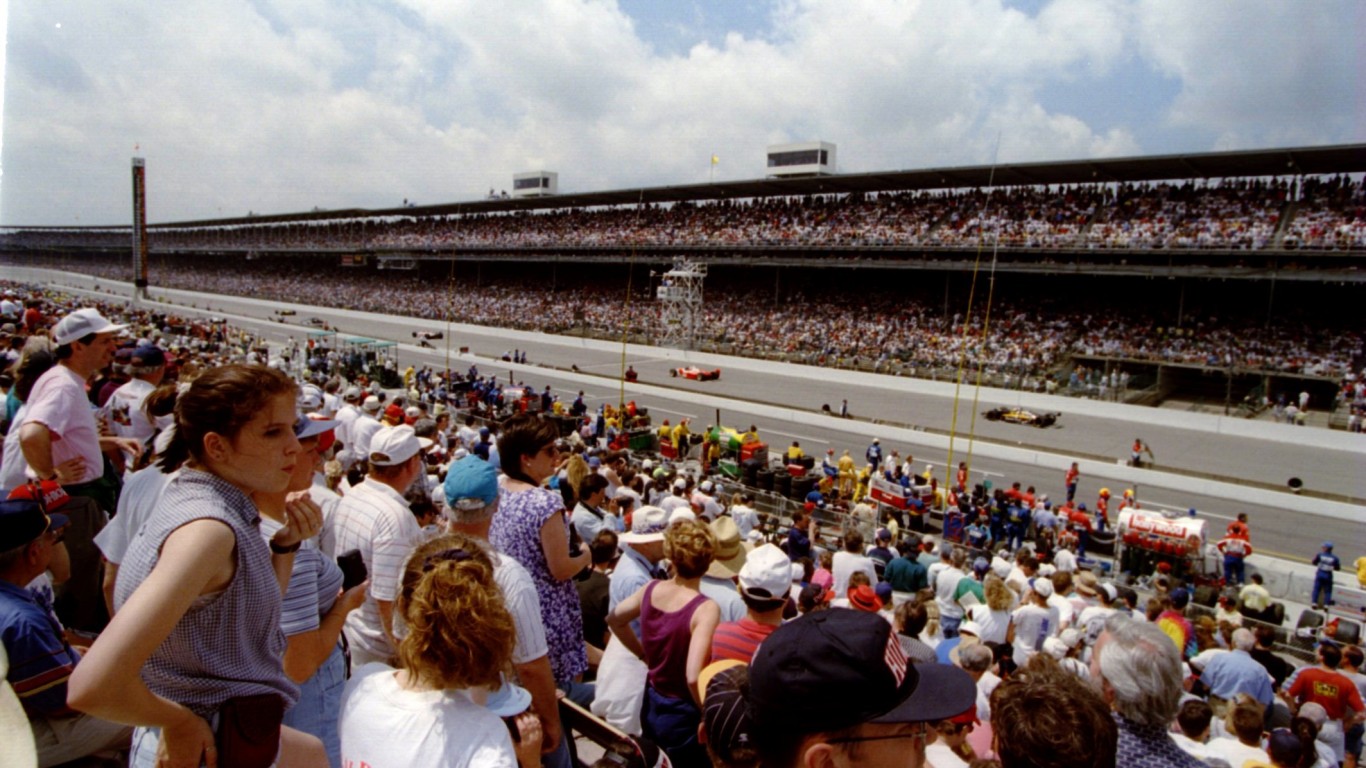
8. 1995
> Winning driver: Jacques Villeneuve (avg. speed: 153.6 mph)
> Lead changes: 24
> Margin of victory: 2.48 seconds
> Winning race time: 3:15:17
The 1995 Indianapolis had a memorable and thrilling finish, in large part because leading drivers kept making the same mistakes. Jacques Villeneuve illegally passed the pace car, earning him a two-lap penalty. The Canadian was able to make up the two-laps penalty as late leader Scott Goodyear passed the pace car as well heading into lap 190 out of 200. Goodyear was forced to pull over, and officials stopped scoring his run, bringing his race to an end.
Nine cars in total crashed and were unable to continue, leading to 62 total caution laps. Villeneuve was able to continue, eventually persevering and edging out Christian Fittipaldi by nearly 2.5 seconds.
7. 1960
> Winning driver: Jim Rathmann (avg. speed: 140.3 mph)
> Lead changes: 6
> Margin of victory: 11.52 seconds
> Winning race time: 3:33:50
More than 60 years later, the 1960 Indianapolis 500 still ranks as one of the best races ever run. It served as a rematch of the previous year’s race, when Rodger Ward edged out Jim Rathmann.
This time, Rathmann got the better of his rival, after Ward had to make a pit stop with four laps to go as his tires were nearly worn out. Rathmann finally finished first after coming in as a runner-up in the three previous Indy 500s.
[in-text-ad-2]

6. 2014
> Winning driver: Ryan Hunter-Reay (avg. speed: 186.6 mph)
> Lead changes: 34
> Margin of victory: 0.06 seconds
> Winning race time: 2:40:48
The 2014 Indianapolis 500 provided one of the most memorable photo finishes in the race’s history, with Ryan Hunter-Reay finishing about a car length ahead of three-time winner Helio Castroneves — a difference of six hundredths of a second. The 2014 Indy 500 was one of the fastest of all time, at two hours, 40 minutes, and 48 seconds — the second-shortest of all full races behind the 2013 race.
5. 1985
> Winning driver: Danny Sullivan (avg. speed: 152.0 mph)
> Lead changes: 13
> Margin of victory: 2.48 seconds
> Winning race time: 3:16:06
Danny Sullivan’s 1985 Indianapolis 500 win is remembered for one remarkable maneuver. Sullivan was leading on lap 120 when he briefly lost control of his car. He managed to pull off a 360 degree spin at 200 mph — narrowly avoiding both the wall and competitor Mario Andretti.
Not only did Sullivan not crash, but he kept his composure and went on to catch and then pass Andretti within 20 laps. Sullivan maintained his lead for the rest of the race, winning his only Indy 500.
[in-text-ad]

4. 2006
> Winning driver: Sam Hornish, Jr. (avg. speed: 157.1 mph)
> Lead changes: 14
> Margin of victory: 0.06 seconds
> Winning race time: 3:10:59
In 2006, Sam Hornish, Jr. pulled off a stunning come-from-behind victory in one of the closest Indianapolis 500 races of all time. Though Hornish, Jr. started with pole position, father-son duo Michael and Marco Andretti from the legendary racing family were running first and second late in the race.
Michael tried to hold off Hornish, Jr. to guarantee his son a victory, but Hornish Jr. surpassed them both, pulling ahead of the younger Andretti at the final stretch and edging him out by 0.06 seconds at the finish — the third closest finish in Indy 500 history.
3. 1982
> Winning driver: Gordon Johncock (avg. speed: 162.0 mph)
> Lead changes: 17
> Margin of victory: 0.16 seconds
> Winning race time: 3:05:09
For years, the 1982 Indianapolis 500 had the closest finish in race history, with a margin of victory of 0.16 seconds. Before that, no runner-up had finished within two seconds of the winner. But that year, Gordon Johncock and Rick Mears provided spectators with a grandstand finish for the ages.
Going into the final laps, Mears appeared to be running better than Johncock, but Mears’ first attempt to pass failed, and his second attempt came up just short as Johncock held on for his second Indy 500 win.
2. 1992
> Winning driver: Al Unser, Jr. (avg. speed: 134.5 mph)
> Lead changes: 17
> Margin of victory: 0.04 seconds
> Winning race time: 3:43:04
Al Unser, Jr. won the 1992 Indianapolis 500 in the closest finish the race has ever seen, edging out Scott Goodyear by 0.04 seconds. Michael Andretti led for the vast majority of the race, when a late fuel pump failure ended his run. Unser, Jr. led Goodyear going into the final lap, but Goodyear charged hard at the very end. Still, Goodyear couldn’t get around Unser, Jr. and “Little Al” was able to follow in the footsteps of his father, Al Sr., and uncle Bobby by winning the Indianapolis 500.
[in-text-ad-2]
1. 1991
> Winning driver: Rick Mears (avg. speed: 176.5 mph)
> Lead changes: 18
> Margin of victory: 3.15 seconds
> Winning race time: 2:50:00
Rick Mears bounced back from a crash during practice to win the 1991 Indianapolis 500 — which still remains as the most exciting in history. Though he was behind for much of the race, Mears was able to hang around near the legendary Mario Andretti before racing around to the outside to claim a final lead and win his record-tying fourth Indianapolis 500.
Thank you for reading! Have some feedback for us?
Contact the 24/7 Wall St. editorial team.



 24/7 Wall St.
24/7 Wall St.
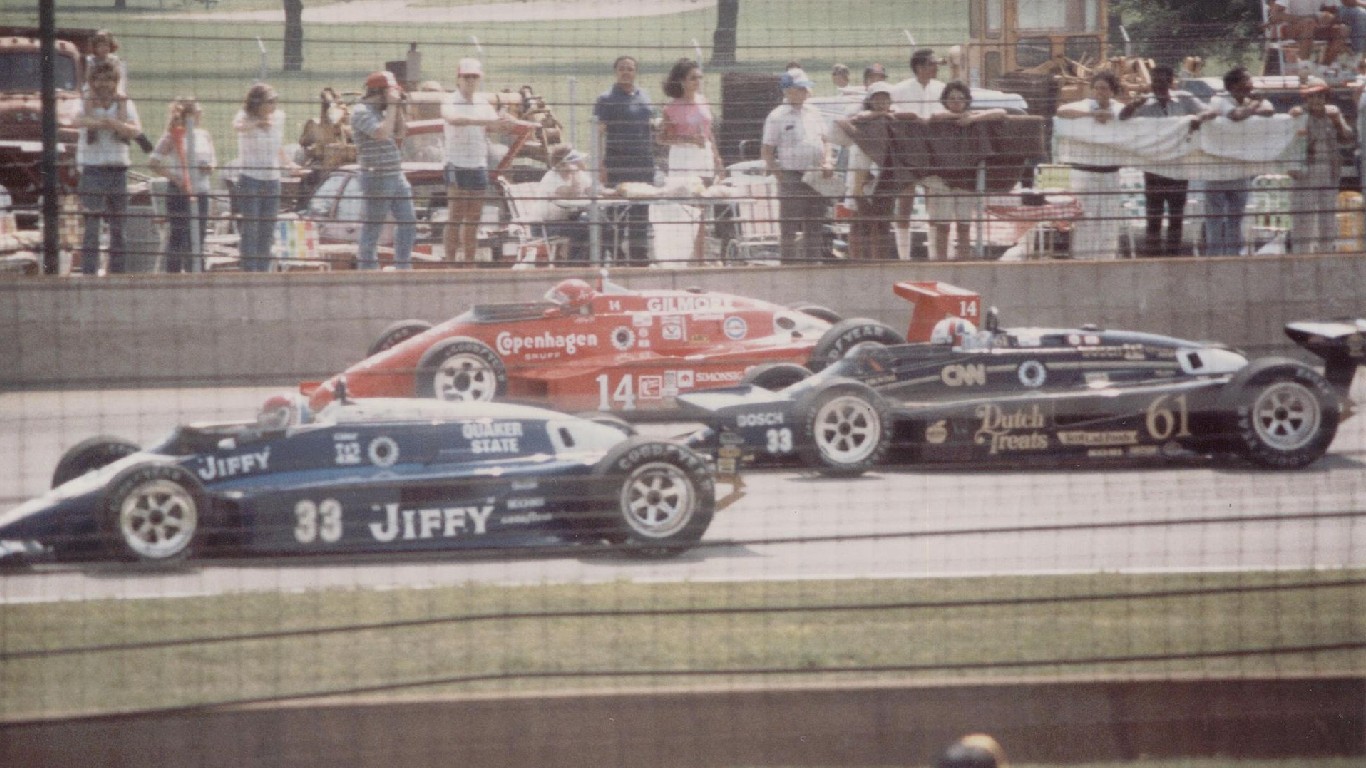
 24/7 Wall St.
24/7 Wall St.